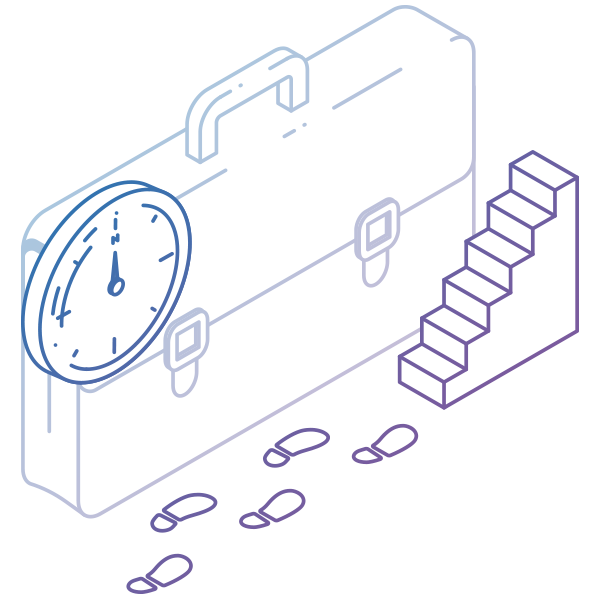What Is Continuous Improvement Software?
Continuous improvement software is a digital platform that enables organizations to identify, implement, and sustain process improvements systematically.
It brings the Lean mindset into daily operations by:
- Capturing improvement ideas from across the business.
- Visualizing workflows to expose bottlenecks.
- Automating measurement of KPIs like cycle time, throughput, and defect rates.
- Reinforcing cultural habits through structured feedback loops.
In Lean terms, it's the behavioral expression of kaizen made scalable - reducing waste (Muda), smoothing flow (Mura), and preventing overburden (Muri).
What Are the Benefits of a Continuous Improvement Software?
When applied effectively, CI software delivers benefits across operational, cultural, and financial dimensions:
-
Centralized visibility: All initiatives, metrics, and progress in one place.
-
Faster collaboration: Distributed teams coordinate seamlessly with visual tools.
-
Data-driven prioritization: Insights reveal where improvements have the highest ROI.
-
Cultural adoption: CI becomes a daily ritual, not a once-a-year campaign.
What Features to Look for in a Continuous Improvement Software?
Choosing the right platform means finding features that support both the technical execution of improvements and the cultural adoption of Lean thinking:
-
Visual management boards: Kanban, whiteboards, and value stream maps to make work visible.
-
Workflow automation: Reduce manual handoffs and eliminate repetitive admin.
-
Customizable dashboards: Track KPIs like lead time, throughput, and defect rates.
-
Integration capabilities: Connect with ERP, CRM, and project tools.
-
Knowledge sharing repositories: Document standards, lessons learned, and playbooks.
 Visualizing departmental initiatives on a project and portfolio management board in Businessmap
Visualizing departmental initiatives on a project and portfolio management board in Businessmap
What Are the Leading CI Platforms in 2025?
The "right" continuous improvement tool should do more than digitize a few Lean techniques. To truly sustain Lean management and constant process improvement, it needs to support the entire journey - from capturing raw ideas to implementing solutions, tracking their impact, and aligning them with strategic goals.
That's why the market spans a wide spectrum:
-
Lightweight diagramming tools: Useful for capturing ideas, mapping process steps, and visualizing workflows.
-
Comprehensive CI platforms: End-to-end solutions that handle idea intake, prioritize and execute improvements, automate progress tracking, and connect outcomes to organizational strategy.
In 2025, some of the most notable players include:
Businessmap: Best for connecting CI initiatives directly to strategy with enterprise-ready workflow visualization and performance tracking.
Businessmap is Lean project & portfolio management software that combines visual workflow management with strategy alignment boards, ensuring improvement initiatives stay connected to organizational goals. It offers OKR tracking, advanced analytics, and real-time dashboards to align daily work with long-term objectives. Teams can map processes, set WIP limits, and apply Lean methods like PDCA or 5 Whys directly within the platform.
»» In practice: Aerospace manufacturer Aerosud used Businessmap to implement Kanban boards and WIP limits, enabling engineering teams to identify bottlenecks, prioritize urgent work, and double throughput in just days. Combined with root cause analysis and feedback loops, continuous improvement became a daily habit - delivering fast, measurable results.
Read the full Aerosud case study →
KPI Fire: Best for CI with built-in Lean Six Sigma and PDCA support.
KPI Fire aligns long-term goals with actionable plans, assigns responsibilities, and tracks success through integrated KPIs. With customizable templates, workflows, and role-based access, teams can adapt KPI Fire to fit their unique structure. Built-in support for DMAIC, PDCA, and Lean Six Sigma methodologies, while intuitive dashboards and visual goal mapping provide real-time visibility.
Kainexus: Best for teams focused on integrating Hoshin planning.
KaiNexus is a continuous improvement platform that connects Hoshin planning with daily execution. Its customizable boards, workflow design, and user permissions give teams flexibility, while real-time dashboards and structured feedback loops keep initiatives aligned across departments. Users can capture, prioritize, implement, and measure ideas or projects in one central system, with optional add-ons for milestones, ROI tracking, and API integrations.
Planivew Ideaplace: Best for innovation management through AI-driven idea prioritization.
Planview Ideaplace is an innovation management platform that unifies ideation, evaluation, and execution in a single system. It helps introduce an idea across the organization. By connecting directly to the broader Planview ecosystem, Ideaplace can link strategy, portfolio management, and delivery and turn ideas into measurable business outcomes.
Targetprocess: Best for scaling Agile and SAFe-ready.
Apptio Targetprocess is a visual, customizable platform for enterprise planning and continuous improvement. It offers built-in OKR mapping, portfolio management, and visualization of dependencies, risks, and progress. Supporting SAFe, LeSS, and hybrid frameworks, Targetprocess offers workflow flexibility, automated prioritization, and milestone tracking.
If your goal is to deliver improvements continuously rather than run one-off projects, lean toward platforms that can help you capture, implement, and measure improvements as an ongoing, connected system.
Implementing Continuous Improvement Software: A Practical Roadmap
Step 1: Define goals and success metrics
Decide what "better" means for you: faster delivery, fewer defects, higher customer satisfaction.
Step 2: Engage stakeholders early
From executives to frontline staff, get buy-in by showing how the tool supports their daily work.
Step 3: Start with a pilot
Choose one process or team where you can deliver visible wins quickly.
Step 4: Train for process and platform
Teach both CI methodology (PDCA, root cause analysis) and how to use the software.
Step 5: Scale and sustain
Expand adoption, standardize workflows, and keep measuring progress.
»» Tip: Avoid "feature overload" at launch. Focus on the capabilities that solve your most pressing pain points first.
How to Measure Progress and ROI of Continuous Improvement Tools
You can and should measure the ROI of CI software - and the best results come when tracking is embedded in daily workflows. Typical metrics include:
-
Key KPIs: cycle time, throughput, defect rate, cost savings, customer satisfaction.
-
Before-and-after comparisons to quantify impact.
-
Automated reporting to maintain transparency with stakeholders.
Platforms like Businessmap automate KPI tracking and enable before-and-after comparisons that quantify impact without the reporting burden.
»» In practice: A leading global manufacturer of electronic components cut product development time by nearly 30% (from 36 to 26 months) after adopting Businessmap to manage projects and processes. The same transformation increased divisional turnover by 250% and connected strategic projects directly to execution. With real-time dashboards, the leadership team could track WIP, reprioritize capacity, and reallocate resources based on hard data - not gut feel.
Read the full engineering process improvement case study →
Embedding a Culture of Improvement with the Right Tools
Continuous improvement is not a project - it's a mindset. The right software doesn't just digitize CI practices; it scales them, connects them to strategy, and makes them measurable.
Ready to see Businessmap in action?





 Visualizing departmental initiatives on a project and portfolio management board in Businessmap
Visualizing departmental initiatives on a project and portfolio management board in Businessmap


